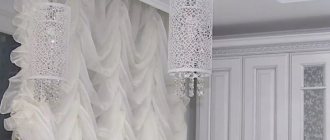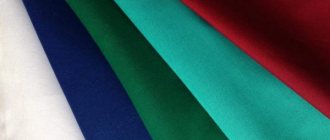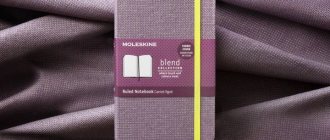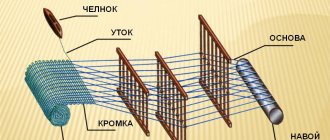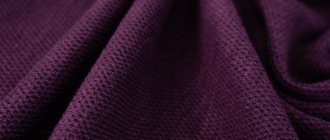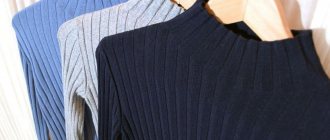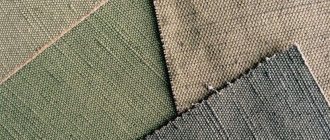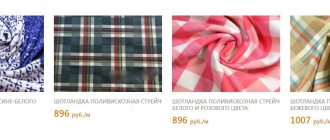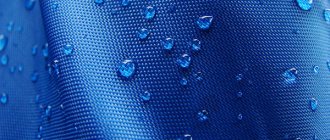Velor fabric is a broad definition that includes not only types of material with a pile surface on the front side. Translated from French, the name means “shaggy”, so the term is used to designate different types - split and looped, differentiated by the method of design. This is the name of some varieties of plush and velvet. The popularity of the velor material is easily explained if we recall its luxurious visualization, its inherent decorativeness and pleasant tactile sensations.
Story
Only the origin of the fabric is known for certain - it came to Europe from the East, but the specific place of manufacture is called differently - the geographical coordinates vary - from China to Iran. The first seems more likely, since velvet (the prototype of velor) was originally made from natural silk. To obtain the pile, silk threads were cut, the material was created using complex and expensive weaving technology. It was very expensive to make such clothes, due to the cost of production and transportation costs.
Those who could afford it appreciated both the ability of silk to protect against flea bites, and additional decorative possibilities - threads of silver and gold, braid with precious stones, hand embroidery. Europe owes the birth of velor to the then developing weaving industry and the simplification of expensive technologies:
Natural silk (of immeasurable cost) was replaced by more affordable wool and cotton;
Pile was no longer made by cutting natural threads (thanks to the different texture, they began to simply be combed);
The density of the weave of the threads was reduced (they, unlike thin silk, were dense and easily amenable to the process).
The reduction in price of velor, the composition of which has undergone changes, has made it possible to launch its mass production and make it available not only to the rich segments of the population. Velor has become a favorite material for elegant clothing among people with average incomes.
Basic rules for caring for velor
With some exceptions, the same rules of care are acceptable when caring for velor.
- The fabric can be washed on a delicate cycle at 30°C.
- It is better to use mild detergents without any additives.
- It is not recommended to squeeze the products too hard. It is better to let the water drain spontaneously.
- The material should not be ironed.
- Local contamination of velor on furniture coverings can be carefully removed with a diluted solution of detergents applied to a sponge.
- Products made from wool velor of any type and grade should be dry cleaned. At home, this can be done using a dry soft brush.
Velor items are usually more expensive than other textile products. The cost is justified by its elegant appearance and properties. All velor products are made from high-quality raw materials, made by responsible professional manufacturers, leaving a pleasant impression on consumers.
Source of the article: https://textile.life/fabrics/types/tkan-velyur-opisanie-sostav-svojstva-dostoinstva-i-nedostatki.html
Description
Velor is a fabric with variable properties, which is now differentiated according to several important characteristics. The breadth of the range produced by the modern weaving industry and the variety of threads provided by farmers and polymer chemistry make it impossible to create a unified classification of all types according to their inherent characteristics:
Velor fabric is different:
According to the origin of the threads - natural velor is made from wool and cotton, synthetic - from polymer mixtures. However, combinations of wool and synthetics (mixed threads that improve performance properties) can be used for clothing and accessories. Natural velor is more expensive, but has less wear resistance. Synthetic and blended have more advantages and a wider scope of application
According to the method of weaving threads (manufacturing technology) - on a knitted and linen base, jacquard, moire.
What velor looks like depends not only on technology, but also on the method of dyeing smooth, printed material. The color can be set in advance, using an already dyed thread, or added after the fabric is formed, varied by weaving in shiny fibers (polymer, lurex or silk).
Types of velor are determined by industrial purpose - wool and cotton velor, mixed velor is used as a material for shoes and clothing, hats and bags. Artificial velor, with its spectacular visualization and durability - for curtains, furniture upholstery and car interiors (these varieties may differ in the strength of the threads, the type of weaving or special impregnations that are dirt- and water-repellent)
Functional characteristics determine the appearance and scope of application: what it is is a simple answer. This is a fabric that has a pile on the surface, but at the same time it is different from plush and velvet. The pile, looped or cut, has a certain pattern, length and density. They determine what to sew from velor - intended for the consumer and used in industry. Use in various fields is due to the presence of many types of fabric with useful or decorative properties, which are combined under one commonly used term.
Classification
According to the composition of the thread:
- Cotton
- Woolen
- Synthetic - artificial thread is added
By weaving method:
- Knitted base - considered elastic and wear-resistant
- Plain weave - used for drape velor
- Moire - forms a pattern due to the different direction of the pile and its length
- Jacquard - forms a pattern by incorporating another thread into the fabric, for example, lurex or silk
Properties
Numerous types have common properties and features that are determined by the threads used in production, so there is no universal answer to the question of properties, as well as to the question of what velor fabrics are made of. To imagine how variable they are, just study the table:
| Type of fabric (composition) | Decorativeness | Exploitation | Useful features | General properties |
| Cotton velor | Achieved by interlacing threads or the presence of loops of different sizes | Hygroscopic, wear-resistant, provides body ventilation, hypoallergenic | Hygienic, environmentally friendly and pleasant to the body | Retains heat perfectly |
| Knitwear – mixed and cotton | Achieved by interlacing threads or the presence of loops of different sizes, coloring, fittings, and pile length | Elasticity and performance properties are determined by the composition | It is used for making sports uniforms and household items; it is comfortable and does not cause discomfort when worn. | Durability and safety |
| Terry (up to 25%) impurities of polymer threads | Loop technology, determined by different loop diameters and coloring methods | The presence of synthetic additives increases wear resistance and adds softness. | Comfortable, hygroscopic fabric with heat-retaining properties | Easy to care for |
| Woolen | Depends on the composition and method of painting | Wool and synthetics last a long time; the satin weaving method gives strength to natural fabrics, but increases the cost | Warm, comfortable, material of different densities, does not create discomfort to wear | Pleasant to the touch |
| Synthetic | Beautiful and impressive fabric | It lasts a long time, has increased strength, is determined by artificial threads in the composition (lycra, polyamide, polyester, elastane) | Easy to clean, does not tear, guaranteed to last a long time | Easy to care for Pleasant to the touch |
| Microliner | Excellent reviews on aesthetic appearance | Moisture-permeable, wear-resistant | Synthetic, but unlike other artificial types, suitable for sewing comfortable clothes | Pleasant to the touch |
The table shows the most common types, from which you can get a general idea of what kind of fabric is presented to consumers under the general name. But many more variations are produced on an industrial scale - for example, fur and leather for making shoes and outerwear.
How does velor differ from other materials?
Velor is often confused with other materials. It is important to know the main differences:
- Suede leather. If velor has a pile located on one side, then suede has a pile on both sides. Also, there are no fingerprints left on the suede; its color is uneven.
- Velvet. It has a shorter pile, is made from natural silk, feels rougher than velor, and is more expensive.
- Microfiber. It is a full-fledged analogue of velor, but unlike the latter, during its manufacture the pile is not woven into the base, but glued to it. Microfiber is thinner and less wear-resistant.
- Chenille. Soft and warm material that does not absorb foreign odors and does not wrinkle. It is characterized by low wear resistance and fragility. It fades quickly and loses its attractive appearance.
- Polyester. Has shorter pile. Poor air permeability and rougher to the touch than velor fabric. It is characterized by durability and low price.
- Velveteen. The main difference is the scars on the front side. The material does not wrinkle, is comfortable to wear, durable. It fades, shrinks, and loses its attractive appearance with frequent washing.
- Flock. Over time it wears out and absorbs odors. It is durable, easy to maintain, and low hygroscopicity.
Production
Velor material differs not only in composition, but also in the production method. Split velor is produced using cloth spinning fabric (natural pile). It is formed due to the characteristics of the thread and the fleecing process, which has retained some features from ancient times, but is no longer a manual, but a mechanized process.
Single panel
Looped pile is produced using a complex rod method; its difference from cut pile is the preservation or cutting of the loop after removing the rod from under the pile-forming threads: if they are cut after fixing, 1 cut fabric is obtained. They leave it in its original form - it comes out loopy. The main difference between the two methods is in maintaining the loop on the fabric or violating its original integrity. Unlike the first method, which requires cutting two more sheets, one is simply made. There are no such difficulties in making velor knitwear - there are alternating tightened and elongated loops.
Double-panel
The fabric is created from two types of warp thread. In this way, only split velor is obtained, since the weft forms an additional layer above the warp. The process involves 5 threads at once (another one connects the weft and warp fabric with a zigzag), and then they are cut and you get 2 parts at once. None of the loops formed by the threads remain intact, but a thick and aesthetic pile is formed.
Customer reviews about velor
Most men and women who have their own car prefer velor as a material for covers. They note the aesthetic appearance and low price of this material.
More than 70% of Russian homes have velor products - upholstered furniture, bedspreads or curtains, and almost everyone said that they are satisfied with the performance qualities of the fabric, and they do not plan to replace it in the near future.
Source of the article: https://tkac.ru/tkani/velyur.html
Kinds
They are so variable and numerous that some consumers do not know that there is such a thing as natural velor, ignorantly believing that it is exclusively a synthetic material, upholstery or decorative. But the in-demand weaving technology makes it possible to achieve the desired result using natural, polymer and mixed threads, and this means not only different quality, but also cost, density, and scope of application.
Cotton
Natural in composition, made from cotton threads. Relatively recently, things made from mixed fibers began to be included in this category, where synthetics are added in small quantities to increase wear resistance and optimize performance properties. The royal option is 100% cotton, hypoallergenic, hygroscopic, breathable and hygienic. It is quite expensive and does not last long, but is appreciated by lovers of comfort and environmental friendliness.
Woolen
The real one is made from cloth yarn that has not been industrially combed and has retained its natural pile. Outerwear, hats, and shoes look aesthetically pleasing and expensive, cost a lot and are valued by experts for their ability to retain body heat, allow air to pass through, comfort and lightness. However, natural velor made from wool is impractical in shoes, so it is often used not for the top, but for a warm lining.
Drape velor
Premium fabric and high prices. Satin weave and merino wool (no other raw materials are used in production) produce a durable and thin fabric that is extremely comfortable and warm. It belongs to the cut category, although fluffy pile is obtained by first simultaneous processing of wool with rollers (napping and oppositely directed), and then by very specific cutting of the resulting result.
Natural
Made from cotton and wool. This category may include knitwear, velor with a pile length from 3 to 7 mm, varying degrees of wear resistance, thickness and strength. They are united by environmental friendliness, natural origin and the comfort of the owner - warm clothes and shoes made of velor, children's, household and sports items made of cotton, their ventilation properties, hygroscopicity, and pleasure to wear are valued. It is noted that in the form of velor, natural fibers become resistant to wear and abrasion.
Synthetic
They are made for specific needs, therefore they have greater density and strength, resistance to fading, deformation, and thermal insulation properties. Synthetic velor for shoes and bags does not allow water to pass through, is inert to creasing and ultraviolet radiation. Used for upholstery of furniture and car seats, they have a higher density and are impregnated with compounds that repel dirt, are easy to clean, and are fire or water resistant.
Velor: fabric properties
Despite the different composition of the fabric, appearance and manufacturing technology, the entire textile velor group has a number of common advantages and disadvantages.
Velor is pleasant to the touch, retains heat well, does not lose its shape, almost does not wrinkle, is durable, and wear-resistant. The aesthetic impression of this unique material can satisfy the most picky consumers. Light plays on the velvety surface, reflects from it and forms mysterious halftones and highlights. It doesn’t matter in what capacity it is used, as upholstery fabric for upholstered furniture or as a material for sewing clothes, it holds its shape perfectly and looks luxurious.
Of course, it is not without its drawbacks. Stains of various origins are poorly removed from the velor surface. It attracts dust and hairs. Creases may appear on it, especially noticeable at a certain lighting angle.
What is sewn from velor
The scope of application is another criterion by which we can somewhat conditionally differentiate fabrics with pile into types:
- Dress fabrics include natural fabrics - for the manufacture of sports, home, and children's clothing. But velor shoes, elegant outerwear (coats, coats and raincoats) can also be made of synthetic fabric - dense, with excellent protective properties and inherent decorativeness.
- Interior, with its drapability, resistance to fading and a varied color palette - a way to add style and aesthetics to the environment - is especially effective in curtains and draperies.
- Furniture and automobile - upholstery fabrics that have their own valuable qualities - density, resistance to moisture and dirt.
Velor is placed separately in shoes. All consumers know what velor shoes are - a beautiful material for creating luxurious and elegant boots, elegant boots and shoes. However, natural leather and synthetics have different properties, and it is sometimes difficult even for a specialist to distinguish them by appearance.
Composition and properties
Different raw materials give matter different properties, the composition of textiles affects its appearance:
Drape
The most expensive and natural textiles, without synthetic impurities. It has a denser structure and is made from thin and soft wool from Merino sheep. The value of the fabric is determined by the cost of production and quality - most Merinos live in Australia, and their wool is called “luxury”.
Cotton
It is considered a lightweight, breathable, and most importantly safe and hypoallergenic material, which is why it is used in sewing clothes for children. With the addition of lycra and synthetics, production becomes cheaper, and clothing becomes more elastic. Externally it has a matte shine on the fabric.
Leather (natural)
It is made from goatskin or pigskin, thereby easily distinguishing it from other types of velor.
Synthetic
Cheap material, entirely composed of polyester and elastane fibers, as a result of which it stretches well. It has a shiny surface of the canvas.
Drape
What is drape? What are its properties and features?
more details
divided according to the appearance of the pile:
- Smooth - has an even and standing pile.
- Corrugated or pleated - has small folds throughout the surface.
- Embossed velor looks like corrugated velor, but has a pattern made with hot stamping. This fabric is used in sewing clothes with patterns.
- Shaped - has uneven and sometimes crushed pile, as a result of which the fabric seems to have several shades.
- Knitted velor differs in its structure - this type of fabric is knitted from loops of different types and combined into one fabric.
- Caprovelor is used in car interiors and consists of synthetic, easily stretchable fibers.
- Furniture - is a dense fabric made from a variety of threads. It is used, as the name suggests, in the production of furniture and looks like a dense material with a smooth short pile.
How to properly care
Care tips are determined by the composition and type, but there are also general points - for example, washing at low temperatures, dry stain removal or hand washing without boiling and soaking. Caring for velor boots and shoes requires precautions, regardless of the material of manufacture - the use of aggressive compounds or hard brushes is unacceptable - this will lead to wiping off the pile, the appearance of bald spots, loss of color and presentation.
How to distinguish between natural and artificial velor?
Experts give several recommendations on how to distinguish real velor from artificial leather or suede. There are several basic rules for this:
- bend the material (with such manipulation, natural leather is bent in an arc, while artificial leather is broken);
- apply your hand (put your hand on the front surface and keep it pressed tightly for some time; if the fabric is artificial, the hand will become wet and a mark will remain);
- inspection of the cut (it can give a clear answer to the question about the naturalness of the material; imitation always has a fabric base);
- a drop of water (moisture is not absorbed into natural material, while a wet spot will remain on artificial material).
You can also easily distinguish velor from suede . To do this, you can simply run your finger over the material. The fibers of velor fabric will remain disturbed and will not return to their place, while suede will look perfect. In addition, velor fabric has a pile on only one side, while suede has a pile on both sides.
What is wool blend?
How to clean velor boots at home?
Advantages and disadvantages
It is impossible to argue which velor is better - with thin or dense pile, synthetic or natural. Boots made of natural velor, like woolen clothes, are an expensive pleasure, which has many bonuses - heat conservation and comfort are an undoubted bonus, however, the need for careful care, dry cleaning instead of the usual washing can be called disadvantages. Things made of synthetics have undoubted prerogatives - durability, decorativeness, long service life, but their scope of application is highly specialized, and this must be taken into account. If you sew dresses or home clothes from synthetic fabric, discomfort is guaranteed. Manufacturers widely use different types of velor in light industry, but the consumer himself chooses the products, taking into account the existing need and his own preferences, functional orientation.
Areas of use
Since the light industry produces velor of varying composition and quality, it can be used for a variety of purposes.
Children's clothes, tracksuits, home clothes, and bedspreads are made from cotton velor on a knitted base. Coats, jackets, and hats are made from wool. Some types (moire, jacquard) are used to make exquisite evening dresses and suits, and they are used to cover elegant shoes, handbags and clutches.
Durable and wear-resistant material, which contains synthetic, wool and cotton fibers, is ideal for upholstering furniture of complex shapes. Velor furniture fabric is also suitable for decorating car interiors. In addition, there is a particularly durable automotive version, which is impregnated with impregnations that repel water and dirt.
In addition, it is also used as fabric for curtains in the living room and bedroom.
A wide range of uses, attractive appearance, pleasant tactile sensations, variety of composition, textures and colors, low (compared to velvet) price, excellent performance characteristics make velor one of the most popular materials today. This is natural; beautiful products made from high-quality raw materials, made by conscientious manufacturers, leave only pleasant impressions on consumers.
